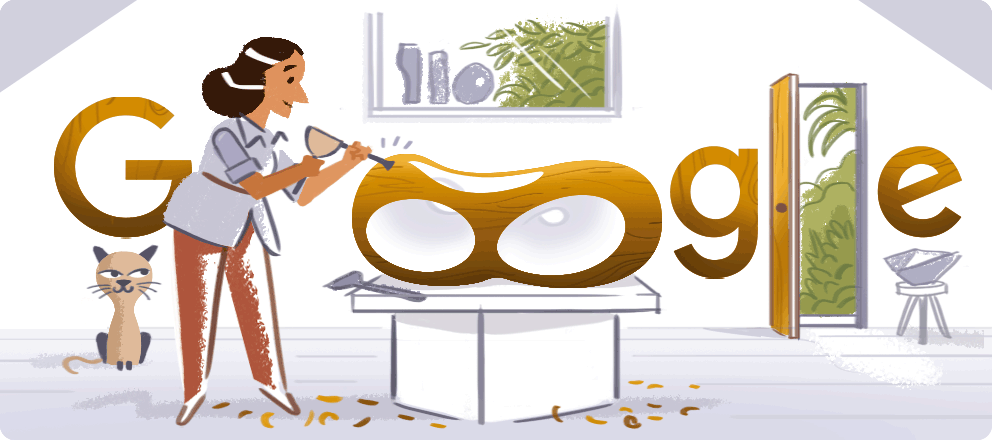Barbara Hepworth – Google doodle on renowned English artist & sculptor

- Country:
- United Kingdom
Google dedicates an animated artistic doodle to Barbara Hepworth, who is widely considered one of the mid-20th century’s most impactful sculptors. Her work exemplifies Modernism and in particular modern sculpture.
Barbara Hepworth (full name Dame Jocelyn Barbara Hepworth) was born on January 10, 1903 in Wakefield, West Riding of Yorkshire. She was one of the few female English artists of her generation to achieve international prominence.
Barbara Hepworth was born to a civil engineer who was working for the West Riding County Council. In 1921, her father advanced to the role of County Surveyor. She attended Wakefield Girls' High School. She won a scholarship to study at the Leeds School of Art from 1920. It was there that Barbara Hepworth met her fellow Yorkshireman, Henry Moore, who was also a renowned English artist and is best known for his semi-abstract monumental bronze sculptures which are located around the world as public works of art.
Barbara Hepworth successfully won a county scholarship to attend the Royal College of Art (RCA) in London, and studied there from 1921 until she was awarded the diploma of the Royal College of Art in 1924. While her early work incorporated classic elements, by the 1930s she had shifted to wholly abstract pieces, among the earliest such sculptures crafted in Britain.
As depicted in the current Doodle artwork, Barbara Hepworth was one of the leading practitioners of ‘direct carving,’ a technique by which the sculpting process is influenced by the qualities of the raw materials, rather than a preconceived model. Her work is frequently marked by a sensitive, organic quality and a signature focus on the interplay between mass and empty space.
In 1938, Barbara Hepworth married Ben Nicholson, who was an English painter of abstract compositions, landscape and still-life following his divorce from his wife Winifred. But they divorced in 1951 and she moved away from working only in stone or wood and began to work with bronze and clay. She often used her garden in St Ives, which she designed with her friend the composer Priaulx Rainier, to view her large-scale bronzes.
The eldest son Barbara Hepworth, Paul was killed on 13 February 1953 in a plane crash while serving with the Royal Air Force in Thailand. A memorial to him, Madonna and Child, is in the parish church of St Ives.
Two museums are named after Barbara Hepworth and have significant collections of her work – the Barbara Hepworth Museum in St Ives, Cornwall and The Hepworth Wakefield in West Yorkshire. Her work can also be seen at many places like Glebelands, Harlow, Essex, UK, The University of Liverpool, The University of Birmingham, The University of Southampton, Highfield Campus, St Catherine's College, Oxford, Cardiff University School of Music, Yorkshire Sculpture Park in West Bretton, West Yorkshire, Clare College, Cambridge to name a few.
Barbara Hepworth was awarded the Grand Prix at the 1959 São Paulo Art Biennial. She also was awarded the Freedom of St Ives award in 1968 as an acknowledgement of her significant contributions to the town. She was awarded honorary degrees from the universities of Birmingham (1960), Leeds (1961), Exeter (1966), Oxford (1968), London (1970) and Manchester (1971).
Barbara Hepworth died on May 20, 1975. Google today honours the renowned English sculptor with a beautiful doodle for using your art to help carve a path toward greater harmony within our society and environment.
Also Read: Mekatilili Wa Menza: Google doodle on legendary Kenyan activist against British rule
- READ MORE ON:
- Barbara Hepworth
- Google doodle
- Barbara Hepworth sculpture










